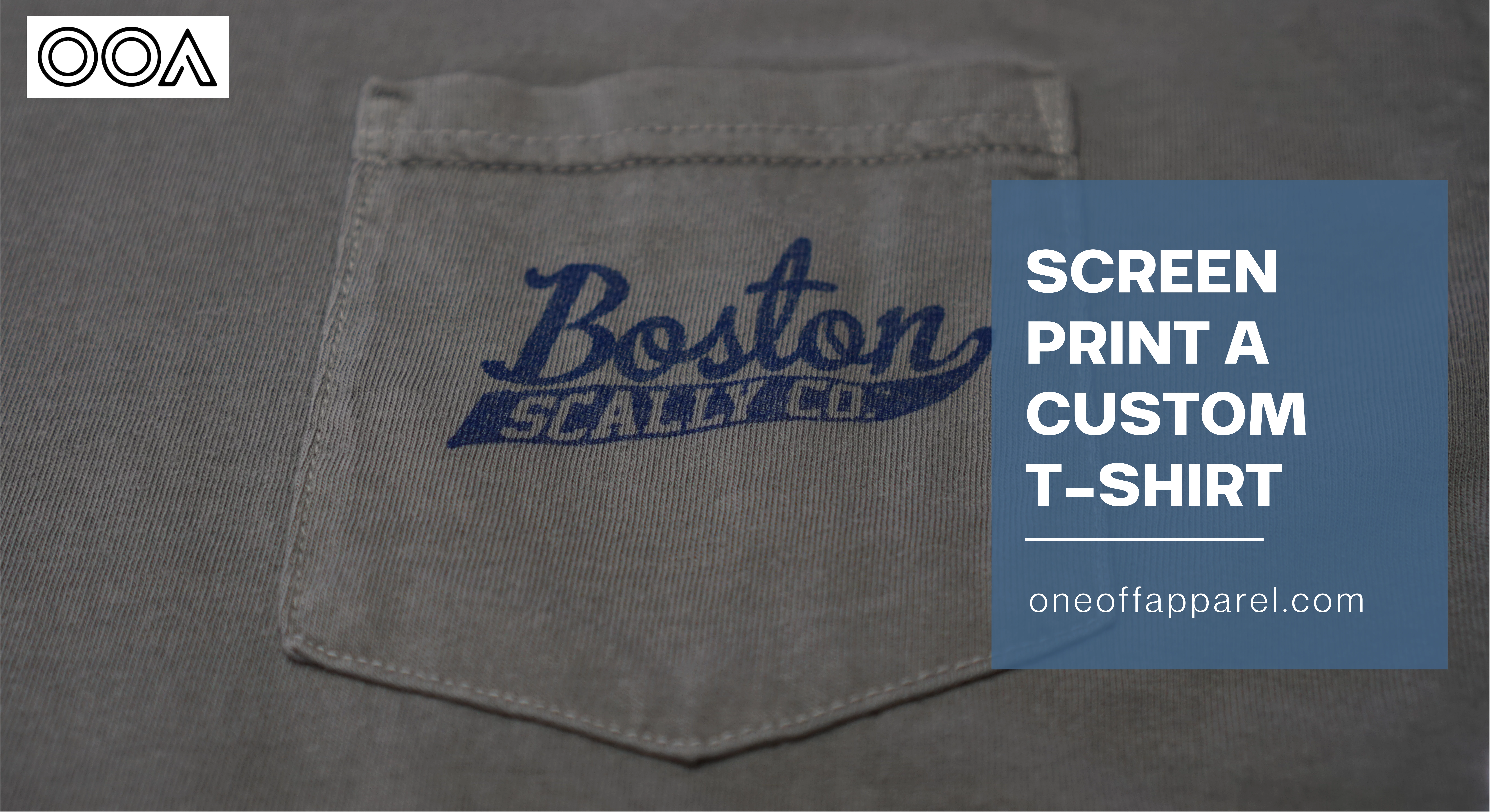
Screen printing custom a t-shirts and tank tops has become the backbone of promotional merchandise, team uniforms, and personal expression through wearable art, including various design templates offered in our design studio, such as options to incorporate your logo to meet your custom apparel needs. Whether you're outfitting a group or looking to screen print a custom t-shirt for personal use, this time-tested printing method, crafted with techniques developed in the USA, produces vibrant, long-lasting designs that withstand countless washes while maintaining their original appearance, allowing kids to be a part of the entire process.
Whether you're planning a single commemorative shirt or launching a full apparel line, understanding the printing process helps you make informed decisions about your custom clothing needs. Professionals like One Off Apparel have perfected these techniques to deliver consistent, high-quality results for rush order projects that meet diverse customer requirements across Massachusetts and beyond.
What Is Screen Printing?
Screen printing operates on a straightforward yet precise principle: ink passes through a mesh screen onto fabric using a stencil system. Each color in your design requires its own individual screen, making this method ideal for larger production runs. The process creates bold, opaque colors that pop against both light and dark fabric backgrounds.
This printing technique excels at reproducing solid colors, simple graphics, and text with clean, sharp edges. Unlike digital printing methods that layer tiny dots of color, printing applies thick, uniform ink coverage that creates a slightly raised texture you can feel when running your fingers across the finished design. This makes printed garments ideal for workwear, sports teams, and promotional items that receive heavy use.
Materials Needed for Screen Printing Tees
Professional printing requires specific equipment and supplies to achieve consistent results. The foundation starts with aluminum frames stretched with polyester mesh, typically ranging from 110 to 160 threads per inch depending on the ink type and design detail level. Higher mesh counts (e.g., 200-300) are used for detailed designs.
Photo emulsion serves as the light-sensitive coating that creates your stencil when exposed to bright light through your design positively.
Specialized screen printing inks formulated for textile applications provide the vibrant colors and wash-fastness that customers expect. Plastisol inks remain the industry standard for their ease of use, brilliant colors, and excellent durability, though water-based alternatives offer softer hand-feel and environmental benefits. Whether you're looking to screen print a custom t-shirt for retail or personal use, squeegees with different durometer ratings provide the tool for applying ink through the screen.
The printing setup includes registration systems to align multiple colors accurately, flood bars for even ink distribution, and curing equipment for final processing. Professional shops invest in conveyor dryers that maintain precise temperature control, while smaller operations might use heat presses or flash cure units for similar results.
Screen Print a Custom T-Shirt : Step-by-Step Process
1. Design Preparation
Preparing your artwork for print-ready files demands careful attention to color separation and sizing specifications. Each color component must be isolated onto a separate layer, then output as a positive film or vellum that fully blocks light in the design areas. For clean reproduction, vector graphics are ideal, though high-resolution raster images can work well with proper handling. Tools like Adobe Illustrator or CorelDRAW simplify this separation process, guaranteeing precision and compatibility with printing equipment.
Standard placement measurements are key to achieving professional results. Chest prints usually measure 10-12 inches wide and are placed 3-4 inches below the collar seam. Left chest designs, typically 3-4 inches wide, sit just above the pocket line. For maximum visual impact, back prints can extend 12-14 inches wide. Note that these are standard guidelines and can be adjusted based on specific design or customer needs
2. Screen Setup
Preparing screens begins with thorough cleaning using degreasing agents that remove any residual oils or chemicals from previous jobs. The mesh receives an even coating of photo emulsion using a scoop coater, creating a smooth, consistent layer across the entire print area. Proper storage in dark, temperature-controlled conditions prevents premature curing of the light-sensitive coating. These steps are essential when you’re getting ready to screen print a custom t-shirt with professional results.
Registration marks added to each screen ensure multiple colors align perfectly with each other during printing. Professional shops use pin registration systems or pre-registration tables that speed setup and improve color accuracy across long production runs.
3. Applying Emulsion
Photo emulsion application requires controlled lighting conditions to prevent accidental exposure. The coating thickness affects stencil durability and ink flow characteristics - thinner applications work better for water-based inks, while thicker coatings suit plastisol applications. Proper drying removes moisture completely while maintaining the emulsion's light sensitivity.
Environmental factors like humidity and temperature influence drying times significantly. Most shops maintain dedicated dark rooms with controlled ventilation to ensure consistent results across different seasons and weather conditions.
4. Exposing the Screen
Light exposure times depend on emulsion type, mesh count, and light source intensity. Different tools like metal halide lamps, LED panels, or traditional photofloods require unique timing protocols. Under-exposure results in soft stencil edges that break down during printing. On the other hand, over-exposure can close fine details or create thicker stencil walls.
Contact between the positive film and emulsion surface must remain tight throughout exposure to prevent light undercutting that causes fuzzy edges. Vacuum exposure units eliminate this variable by creating consistent contact pressure across the entire screen surface.
5. Printing on the T-Shirt
Proper garment preparation includes removing any sizing treatments that might interfere with ink adhesion. The shirt gets positioned on the printing platen using registration guides that ensure consistent garment placement across all pieces in the run. To screen print a custom t-shirt effectively and prevent any ink from pooling creases or creating uneven coverage—a smooth, wrinkle-free fabric surface is the most important.
The printing stroke combines controlled pressure and speed to push ink through the stencil opening while maintaining clean edges. Professional printers develop muscle memory for a consistent squeegee angle and pressure. This ensures uniform results throughout long production runs.
6. Curing the Print
Permanently bonding the ink to fabric fibers, heat curing also creates wash-resistant designs that keep their color vibrant over time. For full polymerization, Plastisol inks would need temperatures around 320-350°F. In contrast, water-based formulations cure at lower temperatures but require longer exposure times.
Conveyor dryers offer the most consistent curing by maintaining precise temperature profiles as garments pass through the heated chamber. Proper curing prevents wash-out, cracking, or fading caused by insufficient heat application.
Tips for Better Results
Consistent ink viscosity helps avoid common printing problems such as uneven coverage or premature stencil breakdown. By adding reducer or thickener, you can adjust ink flow characteristics to suit different mesh counts and printing speeds. When you screen print a custom t-shirt, maintaining proper off-contact distance between screen and garment ensures the mesh snaps back cleanly after each stroke.
Regular screen maintenance extends stencil life and maintains print quality throughout production runs. Checking for mesh damage, cleaning ink buildup from stencil edges, and monitoring registration alignment prevents quality issues before they affect finished products.
Climate control in the printing environment prevents common issues during production. Proper conditions help avoid ink drying in screens and maintain curing consistency.
Common Mistakes to Avoid
Rushing the exposure process creates weak stencils that break down during printing, leading to fuzzy edges and poor color saturation. When one takes time to ensure proper exposure, you can save on material costs and avoid production delays caused by screen failures.
Garment preparation that’s inadequate causes adhesion problems and shows up after washing. Failing to pre-treat synthetic blends or check fabric compatibility with chosen inks can lead to customer complaints about premature design failure.
Inconsistent printing pressure creates uneven ink deposits that affect both appearance and durability. Training operators to maintain steady squeegee technique and monitoring print quality throughout runs catches problems before they affect large quantities.
Another frequent issue is ink bleeding or blurry prints, often caused by low screen tension or excessive ink on the screen. Low tension allows the mesh to shift during printing, distorting the design, while too much ink can seep beyond stencil edges. Regularly checking screen tension (ideally 25-35 N/cm²) and using flood bars to control ink distribution can minimize these problems, ensuring sharp, clean results.
What Are The Steps Involved In Screen Printing A Custom T-shirt?
To screen print a custom t-shirt, first create your design and prepare the screen by coating it with emulsion. Then, expose it to light to transfer the design. Once washed and dried, align the screen on the t-shirt, apply ink, and finally cure the print for durability.
FAQs About Screen Printing Apparel
- How many washes can screen-printed designs withstand?
- What's the minimum order quantity for custom screen printing?
- Can screen printing reproduce photographic images?
Properly cured plastisol prints maintain durability through many washes when cared for according to manufacturer recommendations. Water-based inks may fade more gradually but offer superior softness.
While technically possible to print single pieces, setup costs make printing most economical for orders of 24 or more pieces per design. Digital methods often prove more cost-effective for smaller quantities, especially when considering pricing and shipping options.
Halftone printing can reproduce photographs, though simpler graphics with solid colors generally produce better results. The mesh count and dot size limitations affect fine detail reproduction compared to digital printing methods.
To master the art of screen printing, custom t-shirts need attention to detail, quality materials, and consistent technique throughout every production step. From initial design preparation through final curing, each phase contributes to creating professional-looking garments that exceed customer expectations.
© Copyright All Rights Reserved

